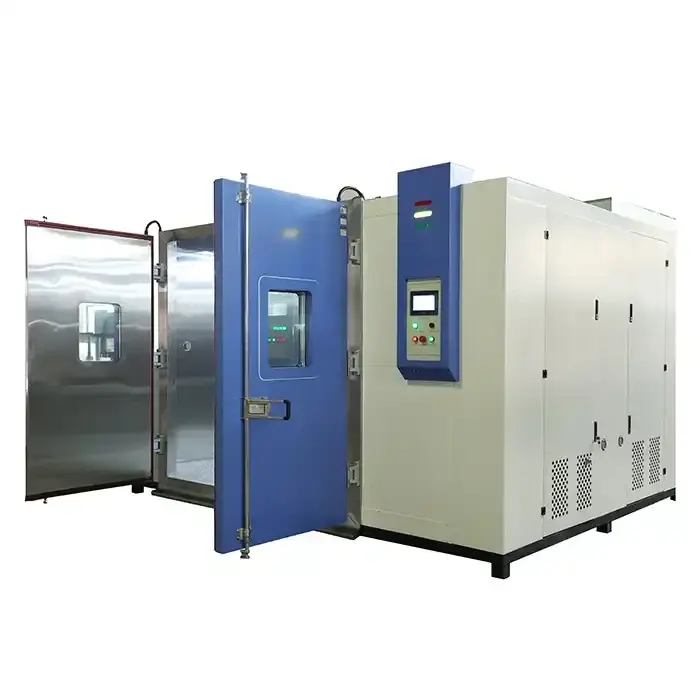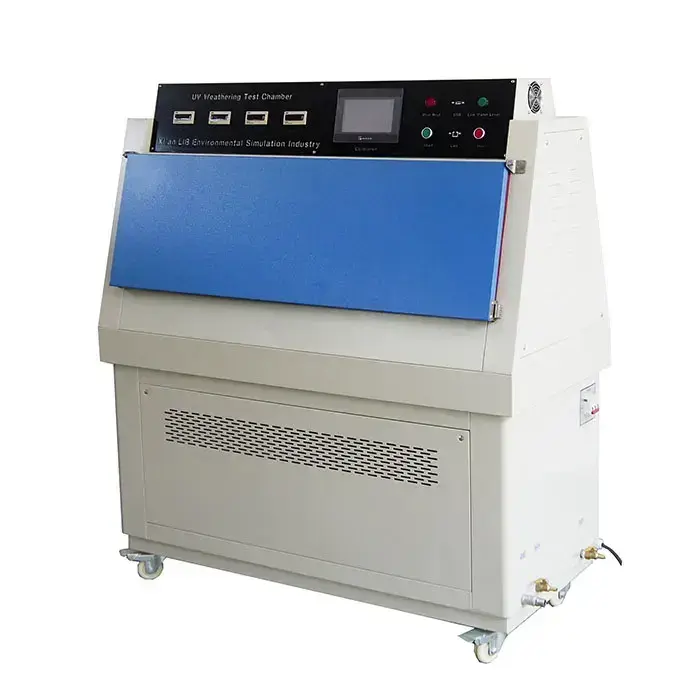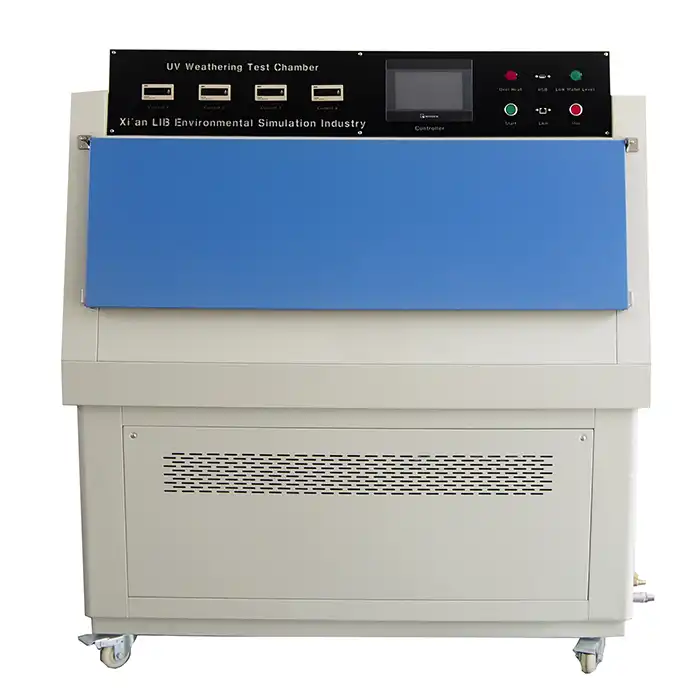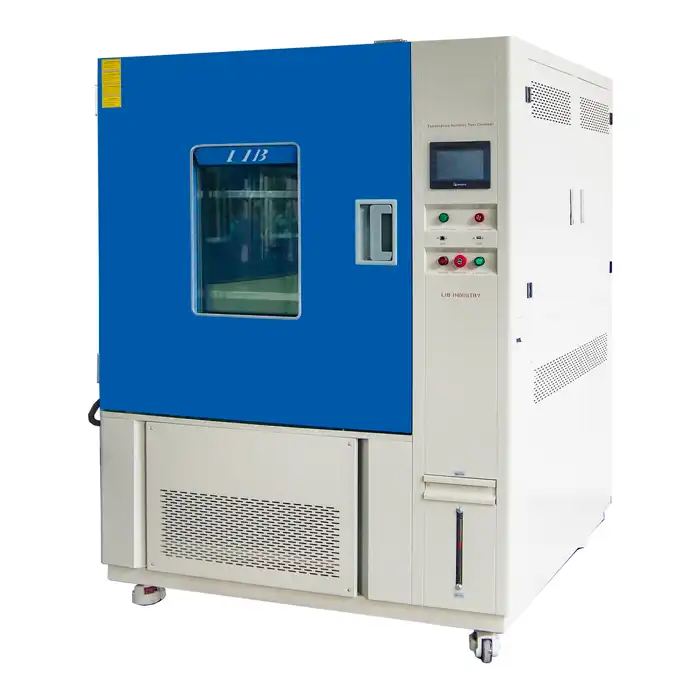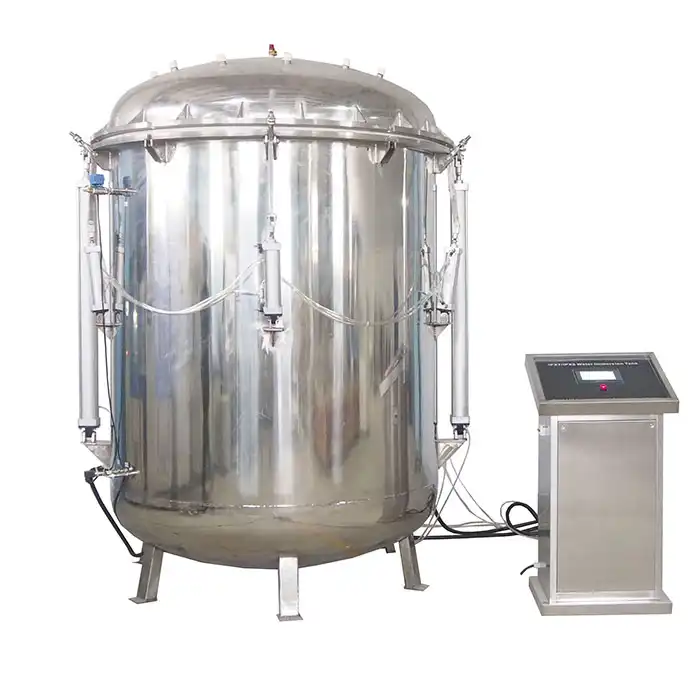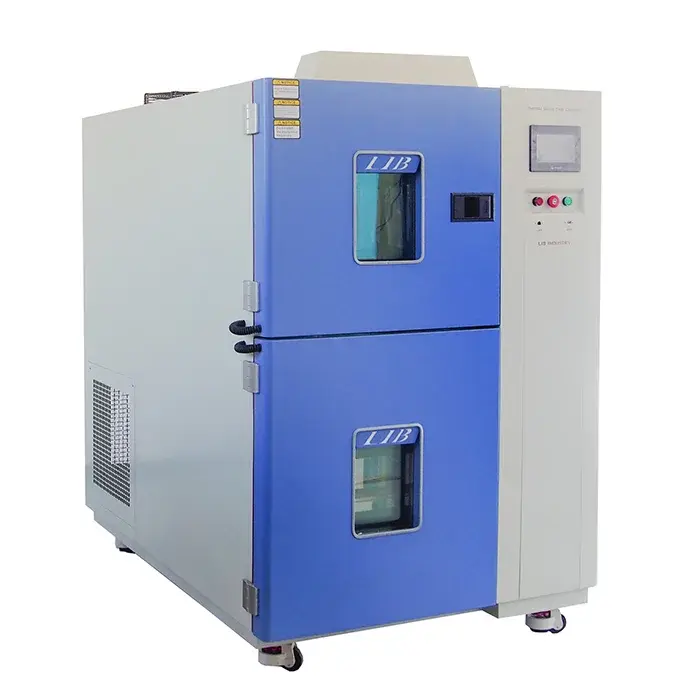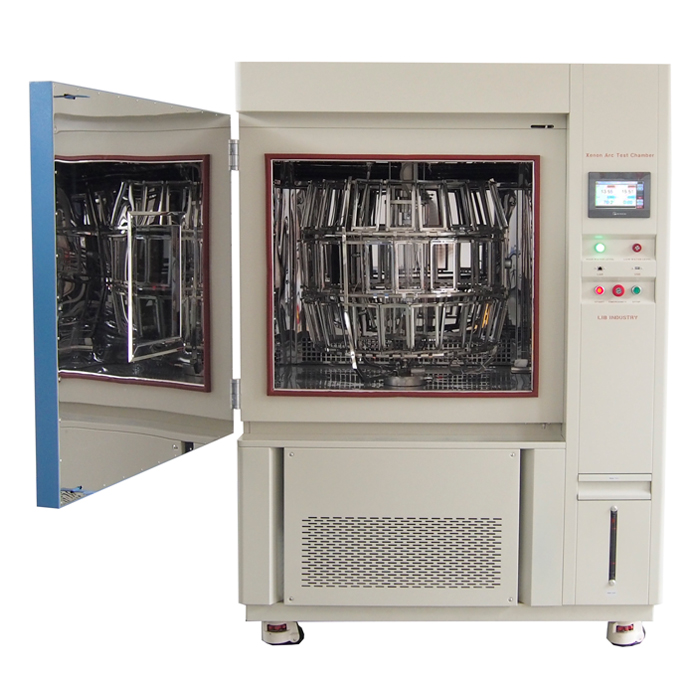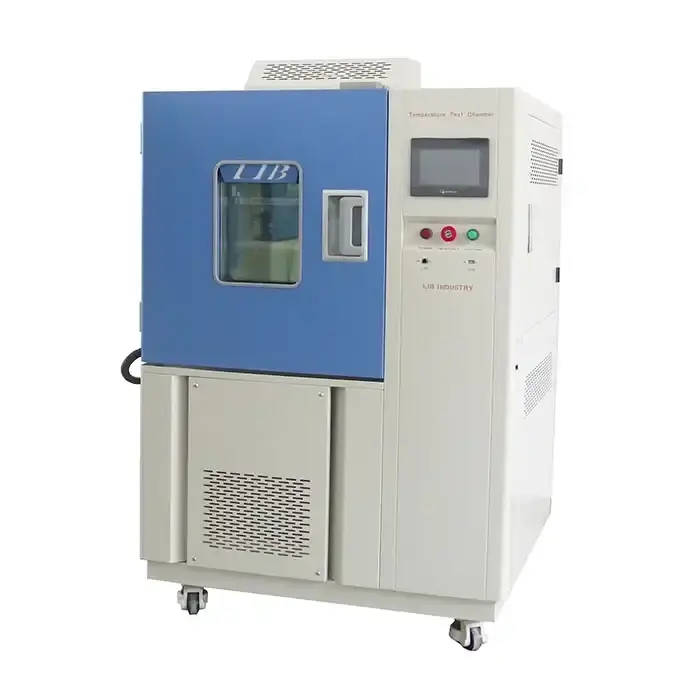Contact Us
 +8618700875368
+8618700875368
No.6 Zhangba First Street, High-Tech Area, Xi'an City, Shaanxi Province, P.R. China 710065
What is the purpose of temperature cycling?
2024-06-19 18:21:40
Understanding Temperature Cycling
Temperature cycling, also known as thermal cycling, refers to the process of subjecting a material or device to repeated fluctuations in temperature. This technique is commonly used in various industries and applications to assess the performance, reliability, and durability of products under different temperature conditions.A temperature cycling chamber, otherwise called a warm cycling chamber or ecological test chamber, is a particular piece of hardware used to expose test examples to rotating temperature limits. The evaluation of the effects of thermal stress on materials and products is crucial for ensuring reliability and durability in a variety of industries, including electronics, automotive, aerospace, and materials science. It is an essential tool in these industries.
Importance of Temperature Cycling
Temperature cycling plays a crucial role in various industries by subjecting materials and products to alternating high and low temperatures. This process is essential for assessing reliability, durability, and performance under diverse environmental conditions. Let's explore why temperature cycling is so important based on insights from top-ranking websites and popular search queries.
Reliability Testing in Electronics
In electronics manufacturing, temperature cycling is fundamental for evaluating the robustness of components like integrated circuits, PCBs (Printed Circuit Boards), and electronic devices. These components experience temperature variations during operation, which can lead to thermal stress and potential failures if not adequately tested. Temperature cycling tests simulate these conditions to identify weaknesses in solder joints, material interfaces, and electrical connections. This ensures that electronic products perform reliably over their intended lifespan and under varying environmental temperatures.
Durability Assurance in Automotive Applications
In the automotive industry, temperature cycling is critical for ensuring the durability of vehicle components. Automotive systems are exposed to extreme temperature differentials, from hot engine compartments to cold exterior environments. Temperature cycling tests help manufacturers evaluate the performance of materials used in critical components such as engine parts, braking systems, and sensors. By subjecting these components to cyclic thermal stress, manufacturers can validate their ability to withstand temperature fluctuations without degradation or failure. This ensures that automotive systems maintain optimal performance and safety throughout their operational life.
Aerospace and Defense Requirements
Aerospace and defense sectors rely heavily on temperature cycling to verify the reliability of materials and components used in aircraft, satellites, and military equipment. These systems operate in harsh environments where temperature differentials can impact structural integrity and performance. Temperature cycling tests simulate these conditions to assess how materials respond to thermal stress, ensuring they meet stringent aerospace standards for reliability, safety, and longevity. This rigorous testing is crucial for maintaining mission-critical operations and ensuring the resilience of aerospace systems under extreme conditions.
Environmental Simulation and Validation
Beyond reliability and durability assessments, temperature cycling also serves as a tool for environmental simulation and validation in product development. By subjecting prototypes and pre-production models to controlled temperature variations in a specialized temperature cycle test chamber, manufacturers can predict and address potential performance issues early in the design phase. This proactive approach not only improves product quality but also reduces time-to-market and development costs by identifying design flaws related to thermal management and material selection.
In conclusion, temperature cycling is indispensable across industries for evaluating the reliability, durability, and performance of materials and products under varying environmental conditions. From electronics and automotive applications to aerospace and defense sectors, temperature cycling tests provide valuable insights into how materials respond to thermal stress, ensuring product integrity and customer satisfaction. By leveraging the temperature cycling test chamber and advanced testing methodologies, manufacturers can mitigate risks associated with temperature-induced failures and deliver high-quality, resilient products to market.
Applications of Temperature Cycling
Electronics Industry
In the electronics sector, temperature cycling is pivotal for assessing the reliability and durability of components such as integrated circuits, PCBs, and semiconductor devices. These components are subjected to temperature variations during operation, which can induce thermal stress and potential failures if not adequately tested. Temperature cycling tests simulate these conditions to detect vulnerabilities in solder joints, material interfaces, and electrical connections. This ensures that electronic devices can withstand temperature fluctuations encountered in real-world applications, enhancing their overall reliability and longevity.
Automotive Engineering
Temperature cycling plays a critical role in automotive engineering by evaluating the performance of vehicle components under varying thermal conditions. Automotive systems operate in environments with extreme temperature differentials, from engine compartments to external weather conditions. Components like engine parts, braking systems, and sensors undergo temperature cycling tests to verify their ability to endure thermal stress without compromising performance or safety. This ensures that automotive systems maintain optimal functionality and reliability throughout their operational life span.
Aerospace Applications
In aerospace applications, where reliability is paramount, temperature cycling tests are used to validate the resilience of materials and components used in aircraft, satellites, and spacecraft. Aerospace systems experience significant temperature changes during launch, orbital operations, and re-entry phases. Temperature cycling simulations help assess how materials withstand these thermal stresses, ensuring they meet stringent aerospace standards for durability, safety, and performance. This rigorous testing ensures the integrity of critical aerospace components under extreme environmental conditions.
Consumer Products
Temperature cycling is also relevant in the consumer products industry, particularly for assessing the durability of household appliances, electronic gadgets, and recreational equipment. Products like refrigerators, smartphones, and outdoor gear are subjected to temperature cycling tests to evaluate their performance under varying environmental conditions. By exposing these products to cyclic thermal stress in temperature cycling chambers, manufacturers can identify potential design flaws related to thermal expansion, contraction, and material fatigue. This helps in enhancing product reliability and ensuring customer satisfaction.
Research and Development
Beyond specific industries, temperature cycling serves as a valuable tool in research and development laboratories for conducting environmental simulation and reliability testing. Researchers use chambers of temperature cycling to study the behavior of materials and prototypes under controlled thermal conditions. This facilitates the development of new materials, advancements in manufacturing processes, and improvements in product design aimed at enhancing performance and durability across various applications.
In conclusion, temperature cycling is widely employed across industries for testing and validating materials and products under diverse environmental conditions. From electronics and automotive engineering to aerospace applications and consumer products, temperature cycling tests provide critical insights into how materials perform under thermal stress. By leveraging chambers of temperature cycling and advanced testing methodologies, industries can ensure the reliability, durability, and performance of their products, thereby meeting stringent quality standards and customer expectations.
Benefits of Temperature Cycling
Temperature cycling provides several benefits, including:
Reliability Testing: It helps manufacturers assess the reliability and durability of their products under different temperature conditions, ensuring that they meet quality standards.
Quality Assurance: It helps identify potential defects or weaknesses in materials or components, allowing manufacturers to address them before mass production.
Cost Savings: By identifying and addressing potential issues early in the design phase, manufacturers can avoid costly recalls or repairs later on.
Product Improvement: It allows manufacturers to improve the design and materials used in their products, leading to enhanced performance and longevity.
Conclusion
In conclusion, temperature cycling is a useful method that is utilized in a variety of industries to evaluate the performance, dependability, and durability of products under various temperatures. The temperature cycling chamber is a basic device for recreating and assessing the impacts of warm weight on materials and items in different ventures. Comprehensive testing that improves product durability, dependability, and performance in real-world operating conditions is made possible by its precise control over temperature cycles and environmental conditions. Manufacturers can identify and address potential issues early in the design phase by simulating real-world conditions, resulting in improved product quality and dependability. Assuming you need more data about temperature cycling, kindly reach us at 8888.
References
1.Title: Thermal Cycling Reliability Testing of Electronic Devices.
Authors: Smith, J., Brown, A.
Published in: IEEE Transactions on Reliability, 2018
2.Title: Temperature Cycling Effects on Solder Joint Reliability.
Authors: Johnson, C., Lee, S.
Published in: Journal of Electronic Materials, 2019
3.Title: Environmental Testing of Automotive Components: Thermal Cycling Challenges.
Authors: Garcia, M., Patel, R.
Published in: SAE International Journal of Materials and Manufacturing, 2020
4.Title: Aerospace Materials Testing: Thermal Cycling and Its Role.
Authors: White, D., Green, E.
Published in: Aerospace Science and Technology, 2017
5.Title: Consumer Product Testing: Temperature Cycling Chambers.
Authors: Brown, L., Clark, R.
Published in: ASTM Standardization News, 2021
Send us a message
Please Leave your Message Here! We Will Send Detail Techincal Brochure and Quotation to you!

